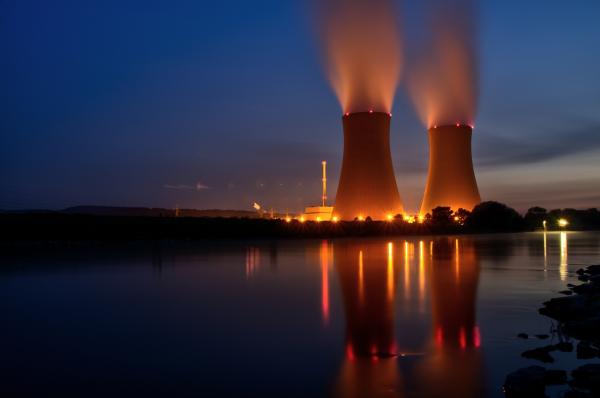The Vogtle plants will be the first of the advanced AP1000 reactor designs to be built in the US (another two – Turkey Point 3 and 4 – are still in the planning stage, and there are six AP1000 reactors that have come online in China since 2018). This reactor design represents a huge step forward, leapfrogging at least three decades of reactor design. You can catch up on how to design a nuclear reactor here, but it’s worth looking at what’s different about the AP1000 plants.
The very first reactors were used to demonstrate that a self-sustaining nuclear reaction could be initiated and controlled as well as to produce plutonium for nuclear weapons, i.e., the Manhattan Project. The first generation of commercial nuclear reactors were prototypes and research reactors, intended largely to develop the technology and to learn how to make reliable nuclear power reactors. These reactors served as the basis for the nuclear reactors that would be put in the first nuclear submarines and surface ships.
Even as the Generation I reactor design was being tweaked, refined, and made larger, the Generation II reactors were being designed to take advantage of what had been learned – most currently operating reactors are Generation II plants, designed and built between about 1965 and 1996. The main distinctions are that the Generation II plants were designed to operate reliably and safely for at least 30 years (when the construction loan was paid off), and many have had their lifespan extended to more than a half-century. They also tended to be huge and complex. The Watts Bar reactor in Tennessee is likely to be the last of this generation to be built in the US. And that brings us to the AP1000 – a Generation III reactor plant.
Generation III
The Generation III and III+ reactors are not a revolutionary improvement over the Generation II designs – that’s the Generation IV reactors that are still on the drawing board. The Generation III is characterized as an evolutionary design that offers significant improvements without straying too far beyond the boundaries of Generation II technology. Generation III and III+ reactors take advantage of over three decades of operational experience, increased understanding of materials science and reactor physics, and vastly improved computer design techniques. As a result, the Gen III and III+ reactors are
- simpler in design
- designed to last for at least 60 years
- employ safety features that take into account lessons learned from the Three Mile Island and Fukushima accidents.
This last point – enhanced reactor safety features – warrants additional discussion.
Acting Less, Doing More – Passive Safety Systems
Reactors generate heat, and it must be removed, even from a shutdown reactor, to prevent the core from melting. Gen II reactors accomplish this by running reactor coolant pumps powered by the grid, emergency diesel generators, or other means. Fukushima demonstrated that any power source could be lost if things go bad; Gen III and III+ reactors have passive safety features that can help out when needed.
For example, when water warms, it becomes less dense and rises, allowing denser and cooler water to flow in to replace it. Hot water rises into a heat exchanger where it transfers heat into the atmosphere or water in a cooling pond, the heat sink, after which it’s dense enough to sink into the core once more…this is called natural circulation. Another form of passive cooling is to have a large water tank situated at a higher level than the reactor core; in the event of a leak or loss of power, the water in the tank (or pond) simply flows through the core due to gravity.
Another safety feature of many Gen III and III+ reactors is a “core catcher” that’s there in case the emergency cooling system runs out of water or otherwise fails to operate correctly. Suppose a loss of cooling causes the core to heat to the point of melting. In that case, the molten materials (called “corium” by some) will fall or flow into the core catcher instead of melting through the bottom of the reactor vessel and onto the floor of the containment building. This helps to protect the integrity of the containment structure, reducing the risk that large quantities of radioactivity will be released into the environment. The idea is to not rely on the operators to take the correct action (or, indeed, to take any actions). According to nuclear engineer James Mahaffey in his book Atomic Accidents, a number of nuclear reactor accidents would have been less severe or averted altogether had the operators simply sat on their hands and relied on the automatic systems – this suggests that including passive cooling systems that require neither electricity nor actions by reactor operators is a good thing!
Both Vogtle reactors will add over 2200 MW of carbon-free electricity to the grid when online. Generating this energy using natural gas would pump more than 7,700 tons of CO2 into the atmosphere yearly; fuel oil and coal are twice as bad. Over the half-century, they’re expected to be operational, that’s nearly 400,000 tons of carbon dioxide that will not be produced because these two reactors went online. That’s not bad.




